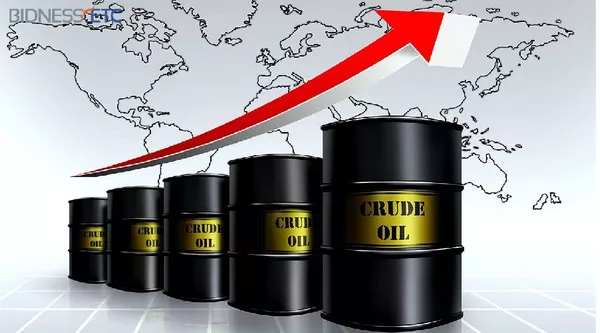Oil futures trading is a vital component of the global financial markets, enabling participants to speculate on the future price of oil and manage risk related to fluctuations in oil prices. It is a complex and dynamic market that plays a significant role in shaping energy prices and influencing various industries worldwide. In this article, we will delve into the mechanics of oil futures trading, understanding its purpose, functionality, and the implications it has on the energy sector and broader financial markets.
Understanding Futures Contracts
1.1 Definition and Purpose
Futures contracts are standardized agreements that obligate parties to buy or sell an underlying asset, such as oil, at a predetermined price and date in the future. These contracts provide a framework for managing price risk and enable market participants to speculate on the future price movements of the underlying asset.
1.2 Role of Exchanges
Futures contracts are traded on organized exchanges, such as the New York Mercantile Exchange (NYMEX) and Intercontinental Exchange (ICE). These exchanges serve as marketplaces, facilitating the trading of futures contracts and ensuring transparency, liquidity, and standardized contract terms.
The Significance of Oil Futures Trading
2.1 Price Discovery
Oil futures trading plays a crucial role in price discovery, as it provides a platform for market participants to express their views on future oil prices based on supply and demand dynamics, geopolitical factors, and macroeconomic conditions. The prices established in the futures market often serve as benchmarks for the spot market.
2.2 Risk Management
Oil producers, consumers, and investors use futures contracts to manage the price risk associated with oil. Producers can hedge against falling prices by selling futures contracts, while consumers can hedge against rising prices by buying futures contracts. Speculators, such as commodity trading firms and investment funds, provide liquidity and assume risk for potential profits.
Mechanics of Oil Futures Trading
3.1 Contract Specifications
Oil futures contracts have specific terms and specifications that participants must understand. These include the quantity of oil represented by each contract, the quality and location of the oil, the delivery months, and the contract settlement method (physical delivery or cash settlement).
3.2 Long and Short Positions
In oil futures trading, market participants can take either a long position or a short position. A long position involves buying futures contracts with the expectation that oil prices will rise, while a short position involves selling futures contracts with the anticipation that prices will decline.
3.3 Margin and Leverage
To enter into futures contracts, traders are required to deposit an initial margin, which acts as collateral. This margin allows participants to leverage their positions, meaning they can control a larger quantity of oil with a relatively smaller investment. However, leverage amplifies both potential profits and losses.
3.4 Daily Price Limits and Circuit Breakers
To prevent extreme price volatility, futures exchanges often implement daily price limits. When these limits are reached, trading is temporarily halted to allow the market to stabilize. This mechanism helps maintain order and prevent excessive price movements.
Factors Influencing Oil Futures Prices
4.1 Supply and Demand Dynamics
Oil futures prices are significantly influenced by global supply and demand dynamics. Factors such as geopolitical tensions, OPEC (Organization of the Petroleum Exporting Countries) decisions, production levels, inventories, and economic growth rates impact the balance between supply and demand, thus affecting oil prices.
4.2 Macroeconomic Factors
Macroeconomic indicators, including interest rates, inflation, GDP growth rates, and currency exchange rates, can influence oil prices. These factors affect global economic conditions, which, in turn, impact oil consumption and demand.
4.3 Geopolitical Events
Geopolitical events, such as conflicts, sanctions, and disruptions in major oil-producing regions, can have a significant impact on oil futures prices. Uncertainty surrounding geopolitical developments can create volatility and influence market sentiment.
Impact on Energy and Financial Markets
5.1 Energy Sector
Oil futures trading directly affects the energy sector, as it allows participants to manage price risk and make informed investment decisions. Producers, consumers, and investors rely on futures markets to mitigate the impact of price fluctuations and plan their strategies accordingly.
5.2 Financial Markets
Oil futures trading has ripple effects across financial markets. Changes in oil prices can impact currencies, equity markets, bond yields, and the overall sentiment of investors. Additionally, oil futures are traded by various market participants, including institutional investors, speculators, and hedge funds, contributing to market liquidity and price discovery.
Risks and Considerations
6.1 Price Volatility
Oil futures trading carries inherent risks due to the volatility of oil prices. Price fluctuations can lead to significant gains or losses, and traders must be prepared to manage the associated risks and potential margin calls.
6.2 Market Knowledge and Research
Successful participation in oil futures trading requires market knowledge, research, and understanding of the factors that influence oil prices. Staying informed about supply and demand dynamics, geopolitical developments, and macroeconomic indicators is crucial for making informed trading decisions.
Conclusion
Oil futures trading is a fundamental component of the global financial markets, allowing participants to manage risk and speculate on future oil prices. It serves as a vital tool for price discovery and risk management in the energy sector, while also impacting various industries and financial markets. Understanding the mechanics of oil futures trading, including contract specifications, long and short positions, and factors influencing oil prices, is essential for participants looking to engage in this complex and dynamic market. Traders must navigate risks, conduct thorough research, and stay informed to make informed trading decisions in the ever-evolving landscape of oil futures trading.


